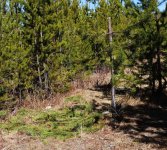Carl-NC
Bronze Member
- Mar 19, 2003
- 1,871
- 1,359
- Detector(s) used
- Custom Designs and Prototypes
- Primary Interest:
- All Treasure Hunting
Real de Tayopa said:Do I have to remind you of IR cameras again? They are photographing 'other energies'.
No, it's the same as a normal camera; they just go down to a slightly lower frequency.
Anyway, I've seen lots of claims of photographable gold auras, usually centered around bad Polaroid film or homemade infrared-modified cameras. Never seen anything that looked even remotely real, or anything that was even remotely properly tested. Does anyone ever study and apply any RealScience to this stuff? It always seems to be done by kitchen-sink tinkerers who don't have a good grasp of physics, who don't know how to perform a decent scientific experiment, and who end up self-deceived by bad lab work.
Like long-range, I guess I can hope for a breakthrough, but I'll doubt and question everything I see.


 Also, if you own a dSLR camera, you can purchase an entier array of UV & IR filters, in all sizes and shades. Here's a cool link about foresnic sciences going digital:
Also, if you own a dSLR camera, you can purchase an entier array of UV & IR filters, in all sizes and shades. Here's a cool link about foresnic sciences going digital:




